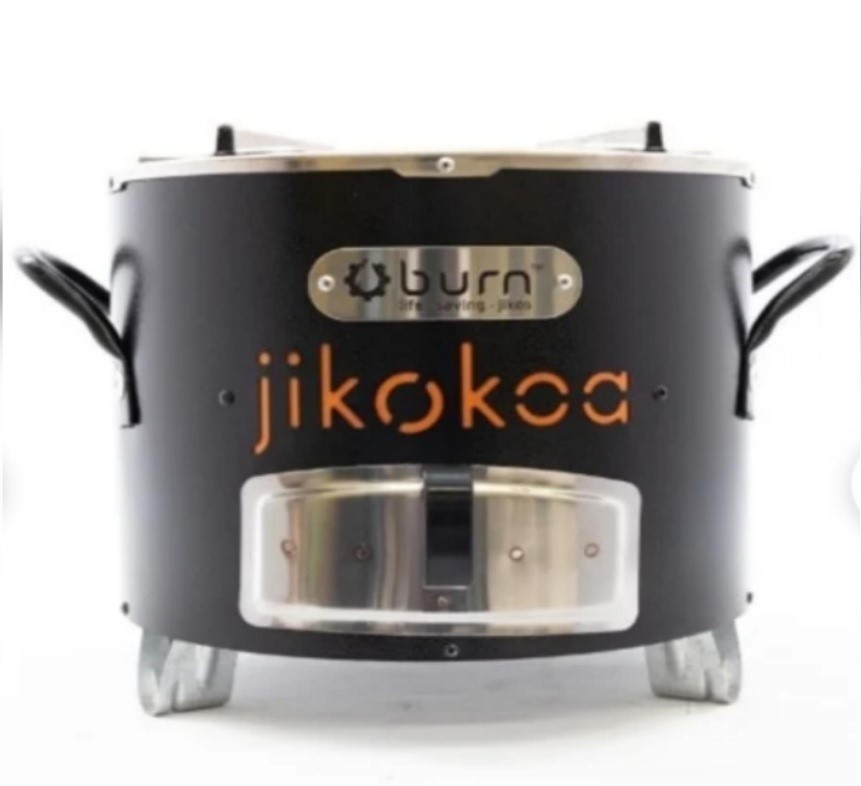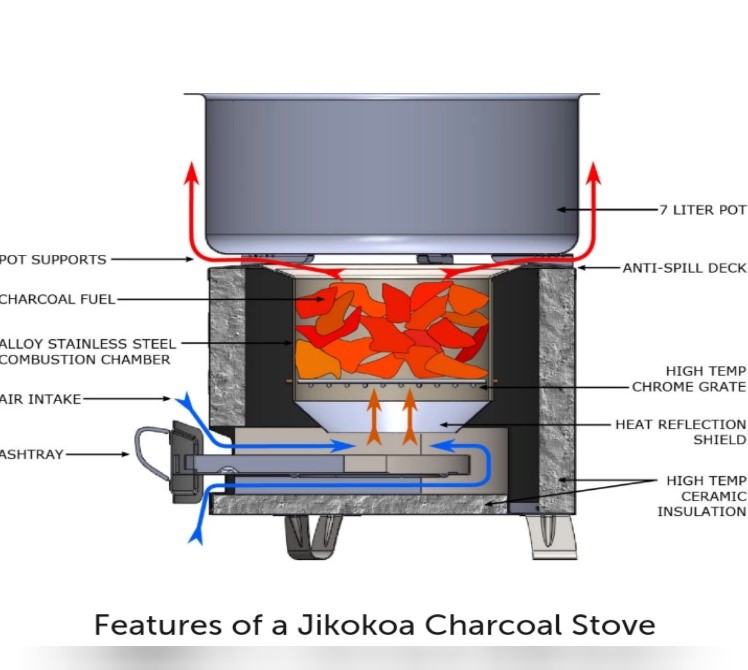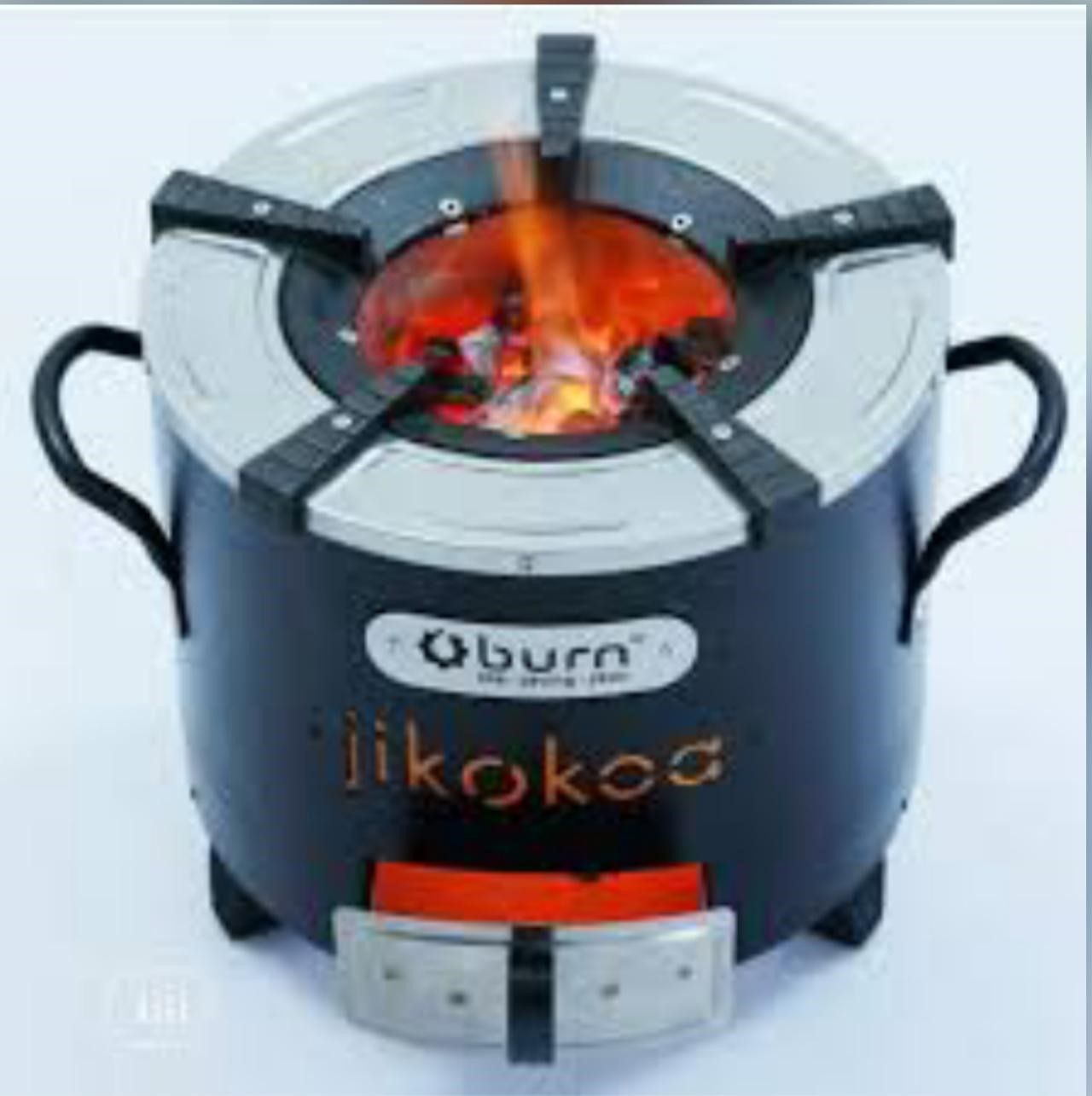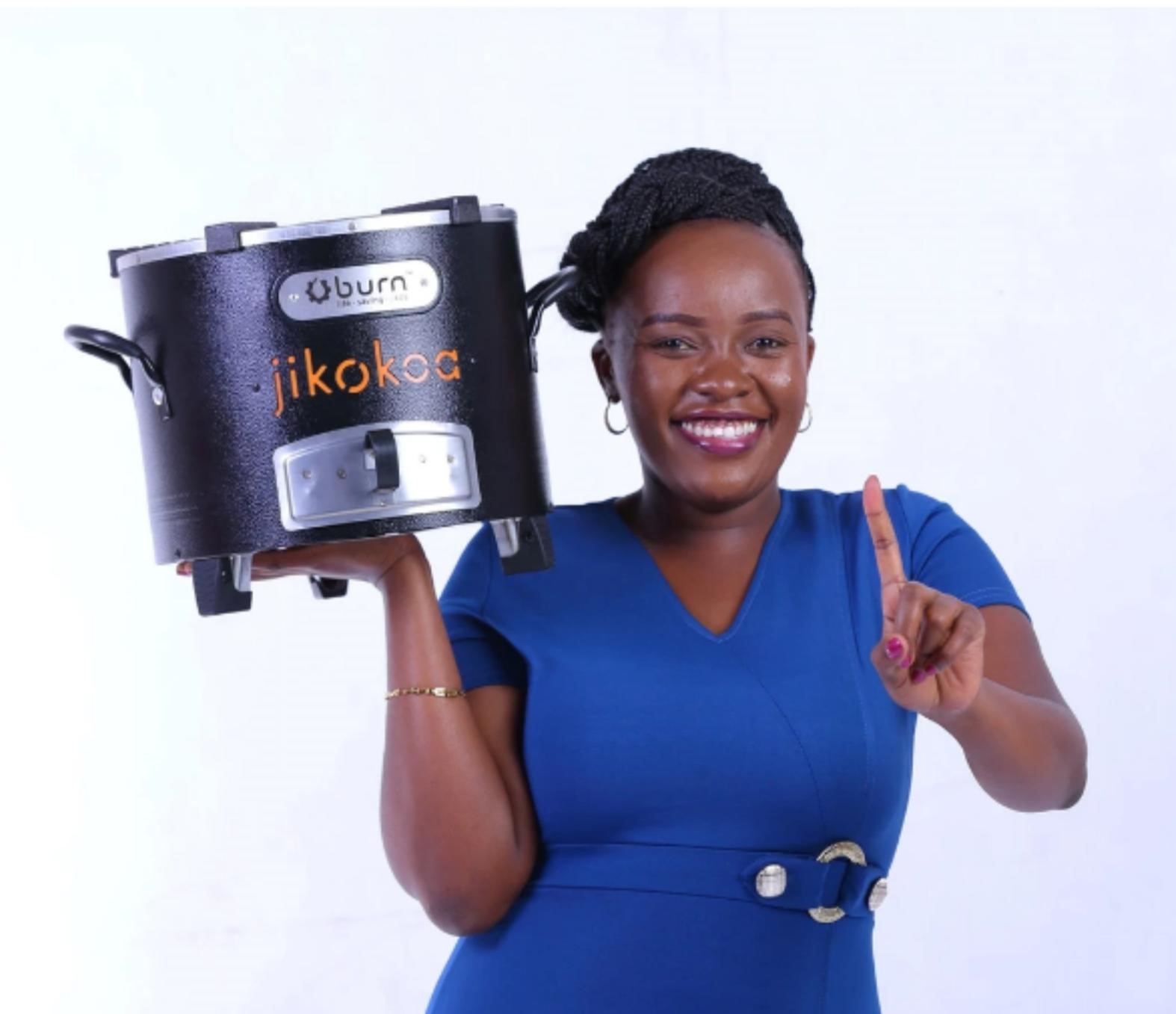Jikokoa Charcoal Stove: How to Buy Jikokoa Charcoal Stove in Nigeria and reduce Your expenses by 50% on Gas Cooker.
 Jikokoa Charcoal Stove: How to Buy Jikokoa Charcoal Stove in Nigeria and reduce Your expenses by 50% on Gas Cooker.
Jikokoa Charcoal Stove: How to Buy Jikokoa Charcoal Stove in Nigeria and reduce Your expenses by 50% on Gas Cooker.
There was a time when gas cookers became the smartest way to go. The price of kerosene has skyrocketed, making it more expensive to use. That was when other benefits of cooking with gas became more apparent. Cooking gas burns cleaner than kerosene, ensuring that your pots and kettles are not blackened with soot from prolonged use.
Cooking gas presented a higher risk of home accidents, especially explosions, because cooking gas is more flammable than kerosene. However, it remained a preferable option because it was cheaper and could last longer.
The narrative has changed again, and many homes now find themselves in a similar situation to when the price of kerosene rose previously. This time though, it’s cooking gas that has experienced a skyrocketing in price. And now the question is, which is the next “smartest way to go.”
A company aptly named “Burn Manufacturing” proposes that the way forward is to go backward. Man has been burning charcoal as a source of energy and to cook food for centuries. However, modernization has relegated this mode of energy consumption almost obsolete. Only the poor stratum of the society still uses charcoal for any form of cooking other than grilling.
Burn Manufacturing’s Jikokoa charcoal stove is a revolutionary product that tackles cooking fuel consumption and cost. Jikokoa comes from two Swahili words, jiko, which means “charcoal stove,” and koa, which means “save.” This stove lives up to its name, as its features ensure you save costs while using it.
Features of Jikokoa stove
Jikokoa offers all the benefits that a charcoal stove provides. However, the technological innovations employed in its production make it several notches better than regular charcoal stoves. Below is a list of these innovations
- Multifunction Ashtray: The ashtray serves to collect the ash residue from the combustion chamber, resolving the challenge of ash residue soiling the floors of your kitchen. The mess that ash from charcoal stoves causes is one reason why people use them outdoors. Jikokoa’s ashtray effectively allows you to use the stove indoors.
The ashtray also serves as a control for the heat output. Jikokoa has two levels of combustion, the low-power, and the high-power. By pushing the ashtray all the way in, you set the stove to low-power, which makes the charcoal burn slowly by reducing airflow.
The ashtray has a notch underneath that partially opens it, which increases the oxygen supply and makes the charcoal burn faster. This is the high-power setting. The output ratio for the high-power to low-power settings is quite significant at 7:2.
 Jikokoa Charcoal Stove: How to Buy Jikokoa Charcoal Stove in Nigeria and reduce Your expenses by 50% on Gas Cooker.
Jikokoa Charcoal Stove: How to Buy Jikokoa Charcoal Stove in Nigeria and reduce Your expenses by 50% on Gas Cooker.
- High-temperature ceramic wool insulation: Another challenge with using charcoal as cooking fuel is its thermal inefficiency. Unlike kerosene and gas cookers, where the flame heats the cookware directly, a charcoal stove heats by convection and radiation. The result is that some heat generated by the burning charcoals is lost through radiation from the stove’s body.
Jikokoa remedies the situation with its insulation around the body. This insulation traps the heat and keeps them inside the combustion chamber. Another benefit of this insulation is that it ensures the stove’s body is cool to touch, avoiding mishaps that could occur from people coming in contact with a hot regular charcoal stove.
- High-temperature alloy combustion chamber: Burn Manufacturing fabricated this charcoal stove with alloys that can sustain high-temperature combustion for a more extended period. The materials of the combustion chamber are also reflective and, together with the shape, also reduce heat loss by redirecting the heat upwards towards the cookware.
The combination of Jikokoa’s insulation and design of its combustion chamber results in a charcoal stove with a 43% increase in thermal efficiency.
- Shrink sleeve coated handles: The shrink sleeves on the handles protect them from corrosion. They also make it easy to carry the stove around, even while in use. This is possible because the shrink sleeves are poor heat conductors.
Other features make Jikokoa impressive, but to appreciate these features, we have to compare the stove with its alternatives. So let’s compare Jikokoa with the two strongest options.
Jikokoa vs Gas Cookers
Fuel efficiency: One obvious advantage that gas cookers have over the Jikokoa stove is the wider range of adjustable heat levels. This gives you more control of the heat you apply as you cook. Jikokoa only has two levels; the low-power and the high-power, which limits control. However, in other features, Jikokoa offers a preferable alternative.
Fuel Cost: This is one aspect of the comparison between Jikokoa and gas cookers that’ll blow your mind! Jikokoa leaves gas cookers behind in a trail of dust in this category. An average family of four kids consumes 12.5kg of cooking gas in a month, and this is only possible when they combine with electric cookers, especially to cook meals that take time. At #700 per kg, that’s #8,750 a month, or #105,000 a year!
For that same family of four kids, a big bag of charcoals will last for two months. A bag of charcoals costs #3,500. So the same family spends #3,500 in two months or #21,000 in a year. This means the family spends just 80% less than they would if they used gas cookers.
 Jikokoa Coal Stove How to Buy Jikokoa Coal Stove in Nigeria and reduce Your expenses by 50% on Gas Cooker
Jikokoa Coal Stove How to Buy Jikokoa Coal Stove in Nigeria and reduce Your expenses by 50% on Gas Cooker
Fuel management: We’ve all been there once. Where the gas gets exhausted while you’re still preparing a meal. You’re sure to agree that it’s a frustrating experience. With charcoal stoves, you’re never caught unprepared. You always know how much fuel you have left and can easily prevent such unfortunate incidents.
Effect on cookware: While gas cookers have a reputation of burning cleanly, and living behind little soot, in reality, this isn’t totally true. Over time, you notice your cookware is stained and will require scouring. Jikokoa offers truly clean combustion and leaves no stain on your cookware.
Safety: The last advantage is safety. While gas cookers are an accident waiting to happen, charcoal stoves present no such risk. You always have to be extra cautious about turning the tap of a gas cooker off to prevent mishaps. The worst that can happen with Jikokoa is that the charcoal in the combustion chamber burns out “harmlessly.”
Jikokoa vs Regular Charcoal Stoves
Effect on cookware: Regular Charcoal Stoves and Jikokoa are based on the same principle and run on the same fuel, so they have some common advantages. One of these is their effects on cookware. Both of them burn cleanly, which ensures that it doesn’t char your cookware.
Safety: Both stoves also have the advantage of being safe to use since their fuel is not flammable.
These are the only advantages they share. In every other aspect, Jikokoa offers benefits that regular charcoal stoves don’t or offer the same advantages to a better extent.
Fuel efficiency: With regular charcoal stoves, there’s no guarantee of even combustion, as the charcoals burn faster every time you fan it and burns slower a while after. This makes it highly energy-consuming. Jikokoa, with its high-power — low-power options, offers the opportunity of controlling its rate of fuel consumption.
Also, with Jikokoa’s high-temperature ceramic wool insulation, it doesn’t lose heat from its body, unlike regular charcoal stoves. The stove loses little heat, as all the heat is transferred from the combustion chamber to the cookware.
Fuel Cost: A direct result of Jikokoa’s higher fuel efficiency is that it reduces fuel costs. By regulating its combustion rate properly and reducing heat losses, this stove uses 65% less charcoal than regular charcoal stoves.
Aesthetics: For this aspect, we’ll consider two factors: appearance and use. Jikokoa’s appearance is nothing short of exceptional. Burn Manufacturing did a great job of designing a product that not only looks classy but whose appearance doesn’t hinder its practicality. Let’s not bother to talk about regular charcoal stoves.
On aesthetics of use, regular charcoal stoves are messy to use, leaving behind ash residue that soils the floors. This makes them highly unsuitable for indoor kitchen use. Jikokoa’s ashtray effectively collects this ash, making it easy to dispose of them and clean the stove’s surroundings. This makes it suitable for indoor use.
Beware of fake products!
 Jikokoa Charcoal Stove: How to Buy Jikokoa Charcoal Stove in Nigeria and reduce Your expenses by 50% on Gas Cooker.
Jikokoa Charcoal Stove: How to Buy Jikokoa Charcoal Stove in Nigeria and reduce Your expenses by 50% on Gas Cooker.
Naturally, a product as revolutionary as Jikokoa will attract counterfeiters. However, you have to be extra careful to ensure you don’t fall victim. Some of these counterfeits are sold at a meager price, and while they would still function as a charcoal stove, they won’t offer the same innovations as Jikokoa. To avoid buying a counterfeit, get your Jikokoa here.
Conclusion
Initially, gas cookers were the best options for the kitchen; they were trendy, came in different shapes and sizes, and did a better job than their alternatives. Now, gas cookers have lost some qualities that made them an attractive option, and the disadvantages now outweigh the advantages. Burn Manufacturing has made charcoal stoves the best option for homes through their innovations. Get your Jikokoa today and lose the stress of managing fuel consumption. Happy cooking.
How to operate the Charcoal stove
Related searches
envirofit charcoal stove price in nigeria
how to use jikokoa charcoal stove
jikokoa stove
price of charcoal stove
envirofit charcoal stove in nigeria
local charcoal stove
charcoal stove in abuja
buy charcoal stove online
Related